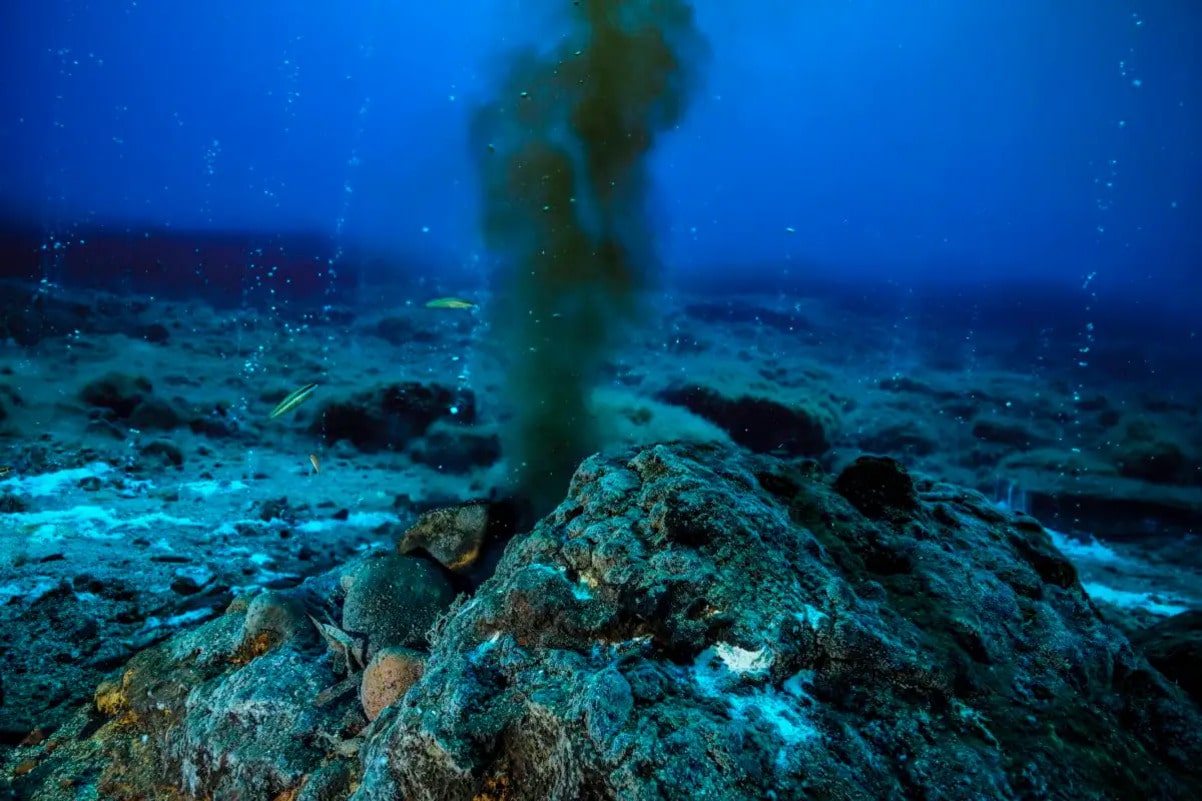Underwater marine volcanoes remain hidden from the human eye, yet they are among the most active geological phenomena on Earth. Their activity shapes the seafloor, creates new islands and influences global ecosystems. Although invisible from the surface, these volcanoes trigger extraordinary natural processes that science is only beginning to fully understand. They captivate both geologists and biologists, opening new paths to explore the workings of our planet. Below is a collection of fascinating and educational facts about underwater volcanoes you may not have known.
- More than 80% of all volcanoes on Earth are located beneath the ocean, mostly along mid-ocean ridges. They form massive chains stretching for thousands of kilometers across the seafloor. These volcanoes are responsible for creating new oceanic crust and continually reshaping the structure of the seabed. This is one of the most crucial processes in Earth’s geological evolution.
- Underwater eruptions can occur silently and remain completely unnoticed by humans. Lava emerging from the Earth’s interior cools rapidly in the water, forming so-called pillow lava. These structures have a rounded shape and can cover vast areas of the seafloor. They create stunning underwater landscapes.
- Some underwater volcanoes are so tall that their summits eventually rise above sea level, forming new islands. One example is Surtsey Island, which appeared in 1963 near the coast of Iceland due to a submarine eruption. Scientists have monitored it since its formation, studying the colonization of new land. It is a rare natural experiment unfolding in real time.
- In regions of submarine volcanic activity, hydrothermal vents known as black smokers often develop. These vents discharge hot mineral-rich water from deep within the Earth. Around them, ecosystems form where organisms can survive without sunlight. These are among the most extreme forms of life on the planet.
- Underwater volcanoes can trigger powerful earthquakes and even tsunamis. Their eruptions can displace large volumes of water or cause seafloor landslides. Such events may have devastating effects on coastal regions. Monitoring submarine volcanoes is therefore vital for natural disaster prevention.
- During eruptions, some underwater volcanoes release gases that form bubbles and foam on the ocean surface. This phenomenon is sometimes observed by fishermen and sailors, though its origin may not be immediately clear. In some cases, it signals an upcoming eruption. These signs are tracked using satellites and underwater sensors.
- Many submarine volcanoes form entire underwater mountain ranges or seismic ridges. Their height can reach several kilometers above the ocean floor. Many of them have flat tops due to erosion, as they were once islands before submerging again. These formations are called guyots or tablemounts.
- Submarine volcanoes contribute to the formation of valuable minerals and metals, including copper, zinc and iron. Hot fluids released from the Earth’s crust precipitate these metals onto the ocean floor. In the future, such deposits may become targets for industrial extraction. However, this raises concerns about the preservation of marine ecosystems.
- Submarine volcanic activity can influence the climate, particularly through the release of carbon dioxide and other greenhouse gases. At great depths, these gases often do not reach the atmosphere in large quantities. However, during massive eruptions, some gases may escape and affect global systems. This topic is still under scientific investigation.
- Some of the most active underwater volcanoes are located near subduction zones, where oceanic plates sink beneath continental plates. These regions experience the most powerful eruptions and form extensive volcanic chains. Notable examples include the Tonga Islands and the Aleutian arc. These areas are a major focus for geophysical research.
- Today, most underwater volcanoes remain unexplored due to the difficulty of accessing them. Scientists study them using bathymetry, sonar mapping, autonomous underwater vehicles and satellite monitoring. Every expedition reveals surprising new details about oceanic geology. Some researchers compare it to exploring another planet.
- In the Mariana Trench, the deepest part of the ocean, underwater volcanoes have also been discovered. Their activity under immense pressure helps scientists study extreme geological processes. Eruptions at depths exceeding 10 kilometers are of particular interest to researchers. These studies help simulate conditions similar to those on other celestial bodies.
- Underwater volcanoes sometimes form calderas, massive craters that result from the collapse of a volcano’s summit. These structures can span tens of kilometers in diameter. They are studied to better understand large-scale volcanic events in Earth’s past. Some calderas remain active to this day.
- Scientists believe that life on Earth may have originated near submarine hydrothermal vents. These areas host microorganisms that use chemical energy instead of sunlight. Their unique structure and metabolism serve as a model for searching for life on other planets. This is one of the most promising fields in astrobiology.
- Eruptions from submarine volcanoes can sometimes produce floating pumice, a lightweight volcanic rock that drifts on the water’s surface for weeks. These pumice rafts can cover areas of tens of square kilometers. They are visible from space and can disrupt navigation. Some marine animals use them as temporary shelter.
These incredible facts about underwater marine volcanoes reveal how dynamic and mysterious our planet truly is. Entire hidden worlds lie beneath the ocean’s surface, waiting to be discovered. Studying these volcanoes deepens our understanding not only of Earth’s geology but also of the conditions that may give rise to life. Such fascinating facts expand our awareness of the powerful forces that shape our world.





